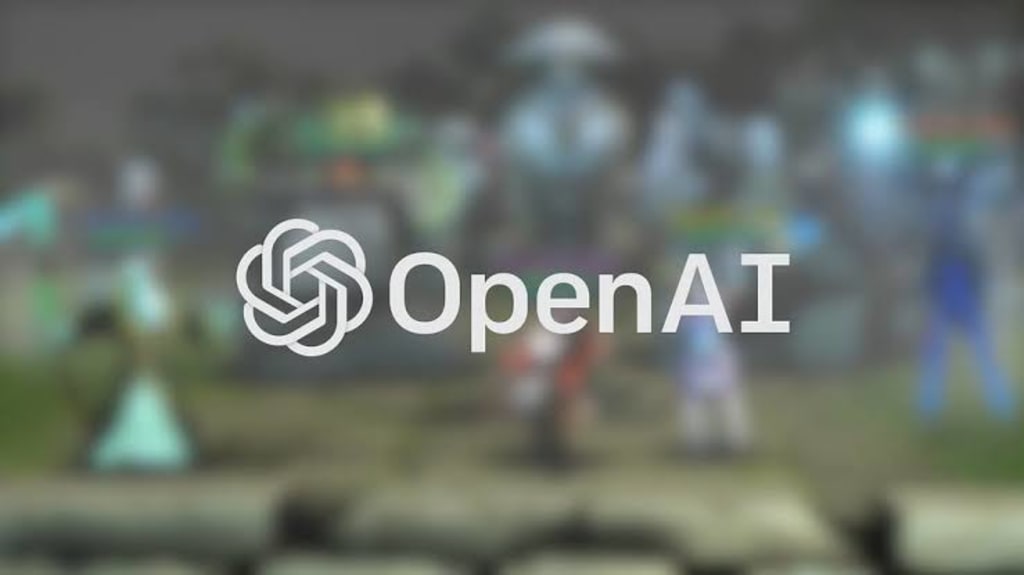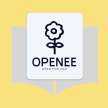OpenAI - ChatGPT,DALL-E
All about OpenAI - ChatGPT,DALL-E any many more

OpenAI :
OpenAI is an artificial intelligence research lab that conducts research in various AI-related fields, such as machine learning, natural language processing (NLP), robotics, and computer vision. They have various projects and models that are focused on developing and promoting friendly AI in a way that benefits humanity as a whole. Some of their notable projects include:
GPT-3: A language model that generates human-like text.
DALL-E: A model that generates images from natural language descriptions.
OpenAI Gym: A toolkit for developing and comparing reinforcement learning (RL) algorithms.
Roboschool: A software package for simulating robots and training RL agents to control them.
OpenAI also releases its research and models to the public to encourage collaboration and open-source development. They also provide GPT-3 based API's for developers to use their models in their applications. They also have a safety team that focuses on identifying and mitigating the potential risks associated with the development of AGI.
In general, OpenAI is a platform of AI research, models and tools that is focused on promoting friendly AI and making it accessible to the public.
ChatGPT :
ChatGPT is a large language model that is trained on a dataset of conversational text. Developed by OpenAI, ChatGPT is able to generate human-like responses to a wide variety of prompts and can be used for tasks such as conversation generation, question answering, and text completion.
The model is based on the GPT (Generative Pre-trained Transformer) architecture, which is a type of transformer neural network that is trained using unsupervised learning on a massive amount of text data. This allows the model to understand the nuances of natural language and generate coherent and fluent text.
One of the key advantages of ChatGPT is its ability to generate highly convincing and natural-sounding text. This makes it well-suited for tasks such as chatbot development and dialogue systems. Additionally, the model can also be fine-tuned on specific tasks or custom data to improve performance.
ChatGPT has also been used in a variety of creative applications, such as writing fiction, poetry and song lyrics. The model can also be used to generate summaries of long documents, making it a useful tool for knowledge management and information retrieval.
Another important aspect of ChatGPT is its ability to understand context and generate appropriate responses. This makes it well-suited for tasks such as question answering and information retrieval. Additionally, the model can be used for text completion, where it can generate coherent and fluent text to complete a partially written sentence or document.
As the model is based on the GPT-2 architecture, it also has the ability to understand and respond to multiple languages, making it a powerful tool for natural language processing and machine translation.
However, it's important to note that even though ChatGPT can generate highly convincing text, it is not a true AI and does not have the ability to understand or generate new concepts. It can only generate text based on patterns it has seen during its training.
Despite this limitation, ChatGPT is still a powerful tool that can be used to enhance a wide variety of natural language processing tasks. Its ability to generate human-like text and understand context make it a valuable asset for any organization or individual working with natural language data.
In conclusion, ChatGPT is a state-of-the-art language model that is able to generate human-like text, understand context and generate appropriate responses. Its wide range of uses and ability to be fine-tuned for specific tasks make it a valuable tool for natural language processing and a variety of other applications. OpenAI's release of the model and API's make it accessible for researchers, developers and companies to improve their NLP tasks and create new ones.
DALL-E :
DALL-E is a state-of-the-art artificial intelligence model developed by OpenAI that generates images from natural language descriptions. The model was trained on a massive dataset of images and their associated captions, allowing it to understand the relationship between language and visual content.
One of the key advantages of DALL-E is its ability to generate highly detailed and realistic images. The model is able to understand the nuances of natural language and generate images that accurately reflect the described content. This makes it well-suited for tasks such as image synthesis, computer vision, and visual storytelling.
DALL-E can generate images from a wide range of natural language prompts, from simple descriptions such as "a two-story pink house with a white fence" to more complex and abstract concepts like "a futuristic city with flying cars." The model is also able to generate images that are not based on real-world examples, such as "a dragon with a unicorn horn" or "a robot made of ice cream."
One of the most exciting applications of DALL-E is its ability to generate images for creative and artistic purposes. The model can be used to create unique and imaginative visuals for movies, video games, and other forms of digital media. Additionally, DALL-E can be used to generate images for scientific and educational purposes, such as creating visualizations of complex data or illustrating scientific concepts.
DALL-E can also be fine-tuned on specific tasks or custom data to improve performance. This allows the model to learn more about a specific domain, such as medical imaging or architectural visualization, and generate more accurate and detailed images.
However, it is important to note that DALL-E is not a true AI and does not have the ability to understand or generate new concepts. It can only generate images based on patterns it has seen during its training. Additionally, DALL-E is not able to understand the physical properties of the generated image such as weight, volume, or feasibility.
Despite these limitations, DALL-E is still a powerful tool that can be used to enhance a wide variety of computer vision and image processing tasks. Its ability to generate high-quality images from natural language descriptions makes it a valuable asset for any organization or individual working with visual data. OpenAI's release of the model and API's make it accessible for researchers, developers and companies to improve their computer vision and image generation tasks and create new ones.
OpenAI Gym :
OpenAI Gym is a toolkit for developing and comparing reinforcement learning (RL) algorithms. It was developed by OpenAI and provides a standardized environment for RL agents to interact with and learn from. The goal of OpenAI Gym is to make it easy for researchers to develop and test RL algorithms, by providing a common interface for various RL environments.
OpenAI Gym includes a wide range of environments that can be used for training RL agents, such as classic control tasks like cartpole and pendulum, as well as more complex tasks like robotics simulations. The environments are designed to be easily customizable, allowing researchers to adapt them to specific tasks and test different algorithms.
One of the key advantages of OpenAI Gym is its ability to provide a standardized environment for RL agents to learn from. This allows for fair comparison of different algorithms and helps to identify the best performing ones. Additionally, OpenAI Gym is open-source and can be easily integrated into existing projects, making it a valuable tool for researchers, engineers, and data scientists.
OpenAI Gym also has a built-in support for parallelism and distributed computing, this allows researchers to train their RL agents more efficiently and faster. This is especially useful when working with complex and computationally intensive environments like robotics simulations.
OpenAI Gym is also designed to be easy to use, with a simple API that allows researchers to quickly set up and run experiments. This makes it a valuable tool for researchers, engineers, and data scientists who are new to RL and want to quickly get started with experimenting and testing their own algorithms.
In conclusion, OpenAI Gym is a powerful toolkit that makes it easy for researchers to develop and test RL algorithms. Its standardized environments and open-source nature make it a valuable resource for the RL community, and its built-in support for parallelism and distributed computing allows for more efficient training of RL agents. OpenAI Gym can be used to improve the performance of RL agents across a wide range of applications, and make RL more accessible for researchers, engineers and data scientists.
Roboschool :
Roboschool is a software framework developed by OpenAI that aims to simplify the process of training and testing robot control algorithms in a simulated environment. This framework is designed to be high-performance, customizable, and easy-to-use, making it an ideal tool for researchers and developers who are working on robotics projects.
One of the key features of Roboschool is its wide range of simulated robots, environments, and physics engines. These elements can be used to train and evaluate various control and reinforcement learning algorithms, allowing users to test their ideas in a safe and controlled environment before deploying them on real-world robots. This can save time, money and also avoid the risk of damaging the robot and the environment.
Roboschool can be used to train robots for a wide range of tasks, including walking, running, jumping, and flying. This makes it a versatile tool that can be used to develop robots for a wide range of applications, from entertainment and education to industrial automation and search-and-rescue missions.
Another advantage of Roboschool is its scalability. It can run on multi-gpu machine and it has been tested on multiple cloud services. This means that even large-scale, complex projects can be run with ease, and it also makes it possible to conduct large-scale experiments and collect data more efficiently.
Overall, Roboschool is a powerful and flexible software framework that can help researchers and developers to train and test robot control algorithms in a simulated environment. Its wide range of simulated robots, environments, and physics engines, its scalability, and its ease of use make it an ideal tool for those working on cutting-edge robotics research.
About the Creator
Openee Article
Openee Article . Specializing in writing artcile about Entertainers,Scientists,etc... we have a talent for making complex subjects accessible and engaging to a wide audience.






Comments
There are no comments for this story
Be the first to respond and start the conversation.